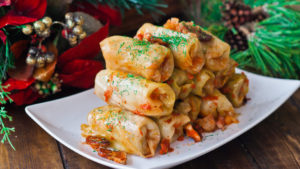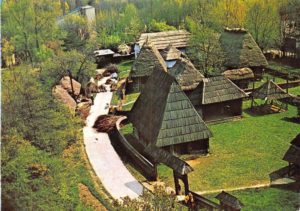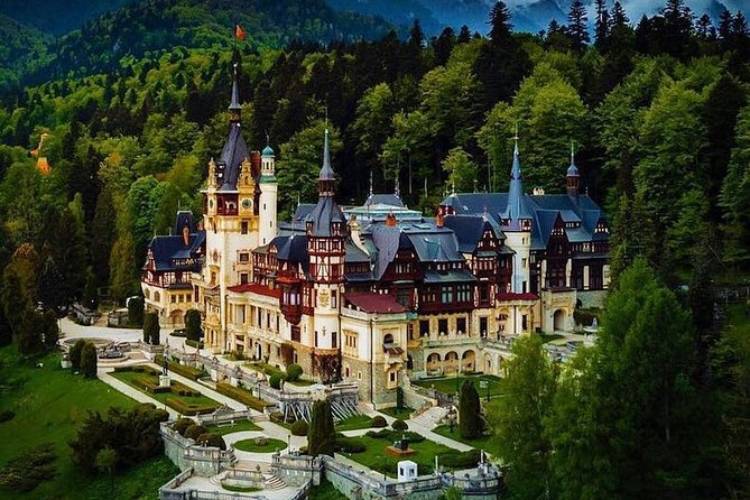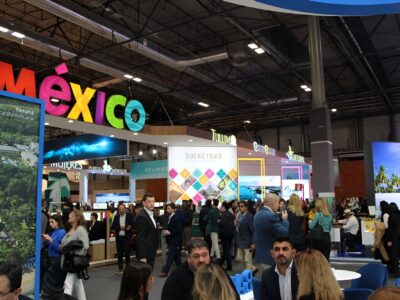
Dracula's castle in Bucharest is a replica of the Poenari Fortress in Arges County, Vlad’s long-time residence
Located in south-eastern Europe, known for Transylvanian forests and ringed by the Carpathian mountains, Romania is best known for the iconic legend of Dracula whose abode was the clifftop Bran Castle, in the region blessed with well-preserved medieval towns like Sighisoara, sprinkled with several fortified churches and castles.
Bucharest was dubbed as the Paris of the East around 1900, not only for its elegant architecture, but also for the fact that locals greeted each other in French, wore the latest Parisian fashion, and would frequently travel to and study in the French capital. Today, nothing evokes Paris better than a replica of its famous Arc de Triomphe. Built to celebrate Romanian victories in World War I, the Triumphal Arch is about 28 m high and covered in Romanian marble. One of the city’s main arteries, Calea Victoriei is dotted with beautifully restored buildings, museums and memorial houses that recall the avenues of Paris.
“I think one should really visit the Romanian town with a tourist guide or in groups because one can easily get overwhelmed by the grandeur and end up spending the whole day at just one place,” Ilana Chakma, a 28-year-old Meghalaya based traveller tells India Outbound.
Visit the world’s biggest parliament

Locals say that due to its weight, the House of the People, as it is best known, sinks by six millimetres each year
The world’s biggest parliamentary building (and one of the largest buildings of any kind) happens to be in Bucharest. Whether one views the gargantuan Palace of Parliament as a folly and testament to the megalomania of former dictator Nicolae Ceausescu or a display of Romanian materials and engineering skill, it is a must-visit. Hour-long guided tours manage to take in just a fraction of the building that is stretched over a million sqm and which has over 1000 rooms and the tonnes of marble, hardwood and gold used in the building’s construction in the 1980s, a time when Romania was straining to feed its own people.
Chakma adds “Locals say that due to its weight, the House of the People, as it is best known, sinks by six millimetres each year!”
Check out Dracula’s Castle
Everyone has heard of Dracula and his Castle, Bran. Perched on a foothill in Transylvania, it dominates the landscape with its presence. However, many historians believe the famed historical figure that inspired the mythical figure of Count Dracula, Vlad the Impaler, never actually set foot in the place. Bucharest too has its own Vlad Castle, giving one the chance to chase the spectre of the Count without even having to leave town.
Located in the centre of Bucharest, in Carol Park, the castle is a replica of the Poenari Fortress in Arges County, Vlad’s long-time residence. Chakma further says “My guide told me that it was built at the request of King Carol I more than a hundred years ago. Its tower was used as a water basin and during WWI was used by a Romanian physicist to send radiotelegraphic transmissions.”
Feast on stuffed cabbage rolls and cornmeal porridge

Dishes in Bucharest are based on time-tested traditional recipes and use locally sourced ingredients
Romanian food is not as well known outside the country as it deserves to be. The best dishes here are based on time-tested traditional recipes and use locally sourced ingredients.
Bucharest is known for sarmale, cabbage rolls stuffed with spiced minced pork and beef. Main courses are often paired with mamaliga, cornmeal porridge topped with sour cream or grated sheep’s cheese. One street snack worth looking out for is covrigi, a soft pretzel topped with salt or poppy seeds and served too hot to handle from the oven.
Walk among century-old village houses

The village museum, located at Bucharest’s Herastrau Lake, celebrates an important part of Romanian culture
A visit to the Village Museum will transport you back in time. Opened in 1936, when most Romanians still lived in rural areas, the museum, located at Bucharest’s Herastrau Lake, celebrates an important part of Romanian culture. The houses, dating from anytime between the 17th and the 19th centuries, are spread along tree-lined alleys, perfect for strolling.
To best enjoy the visit, bring a picnic for lunch and make an afternoon of it, especially if visiting after a few intense days of sightseeing. But whatever you choose, make sure not to miss one of the most beloved and romantic old houses, simply known among locals as ‘the blue house.’ Found on the shore of Herastrau Lake, it can be spotted from the park, opposite from the museum.
Take a selfie at Michael Jackson’s monument
Also located in Herastrau Park, within walking distance of the Arch of Triumph, is a monument that celebrates the legacy of the US singer Michael Jackson and his lesser-known Romanian connection. The first megastar to visit Romania after the fall of the Communist regime in 1989, Michael Jackson was welcomed very enthusiastically by his fans. His 1992 concert, part of The Dangerous Tour, has remained engraved in Romanian popular culture.
Walk among tombstones in Bellu Cemetery

Bellu cemetery is the burial place of many famous Romanian writers, actors and personalities of the past
Bucharest’s answer to Paris’ Pere Lachaise Cemetery is the burial place of many famous Romanian writers, actors and personalities of the past. While many visit the tomb of national poet Mihai Eminescu or famous 20th-century singer Maria Tanase, many others come to the cemetery for its beautifully adorned marble monuments that often convey a tragic or very romantic story.
“For instance, the Poroineanu family’s tombstone, showing an elderly man kneeling in front of a girl lying motionless in a daybed, tells the story of two young lovers who, after getting married, find out they are in fact siblings. After the young woman commits suicide, the father, overcome with remorse, also realises he cannot live with the pain and decides to end his life,” Chakma says.






















